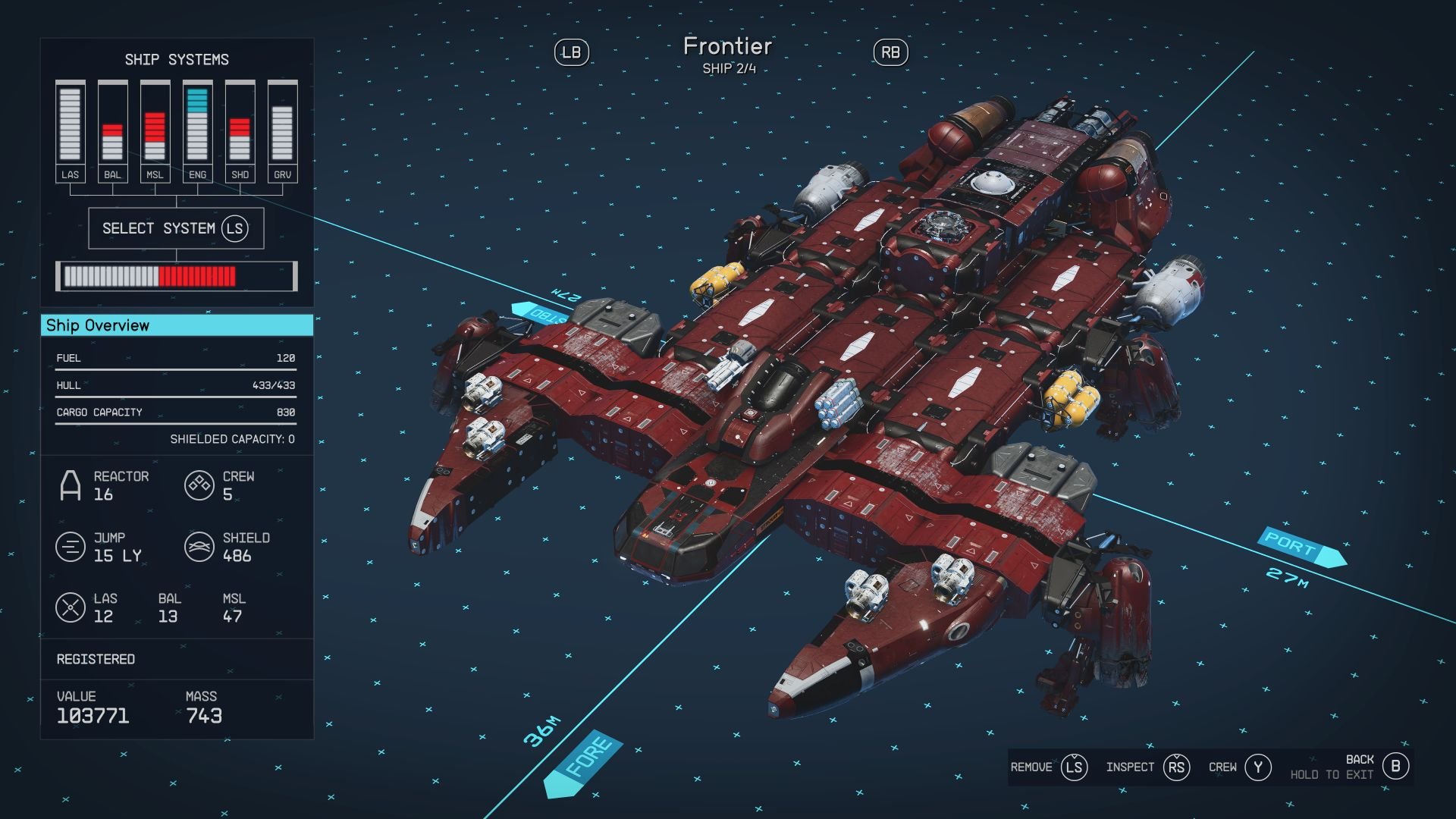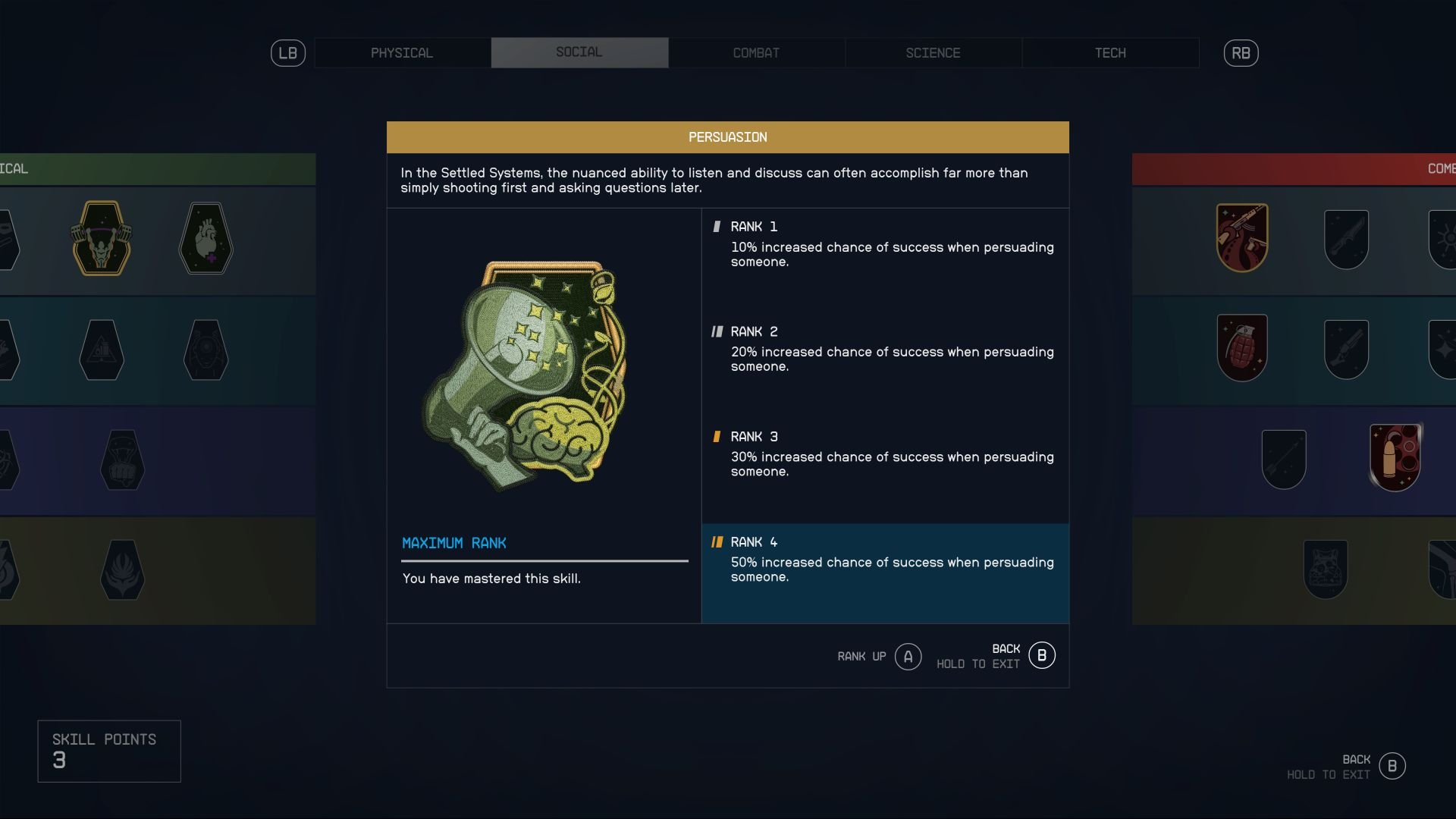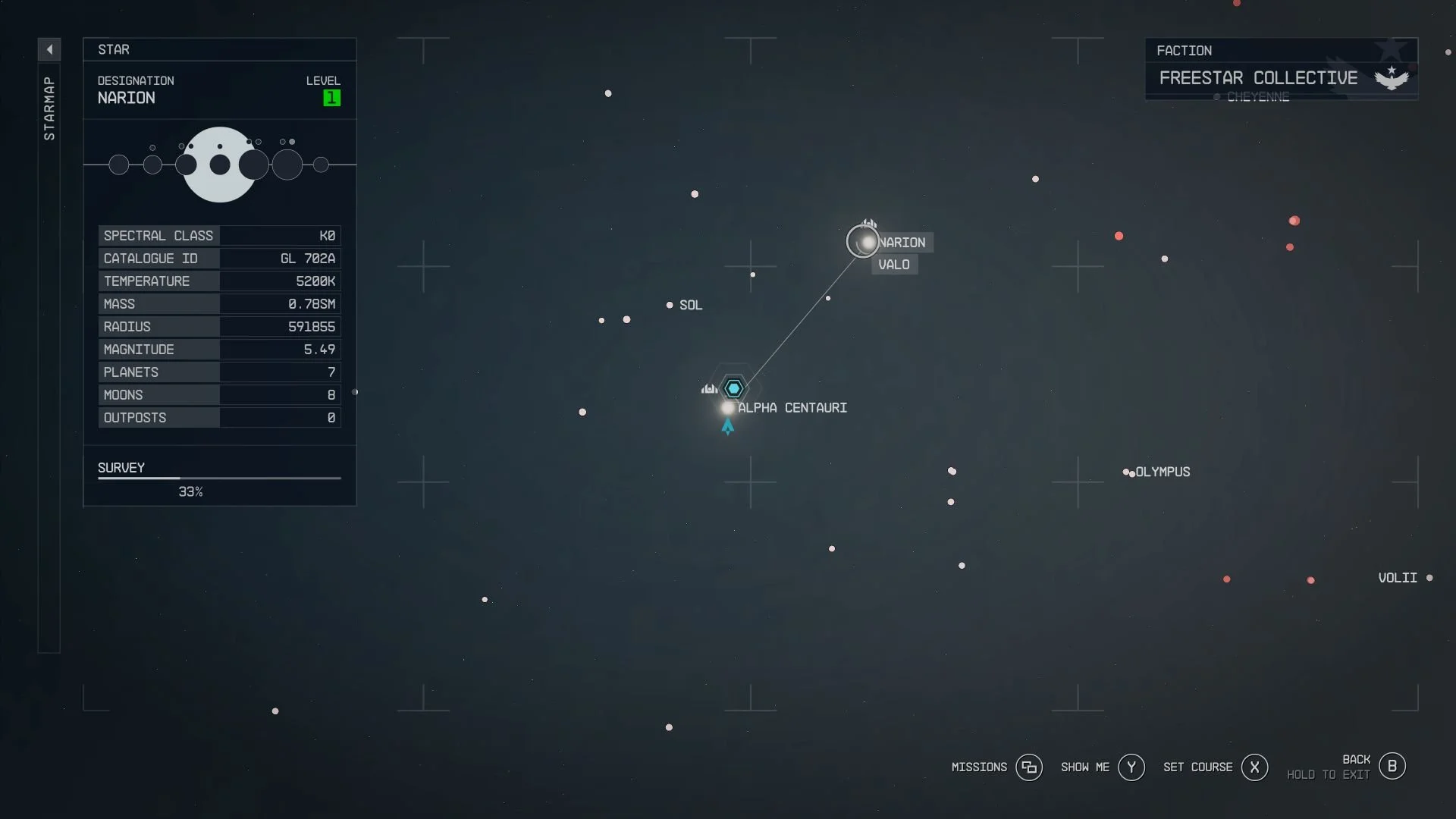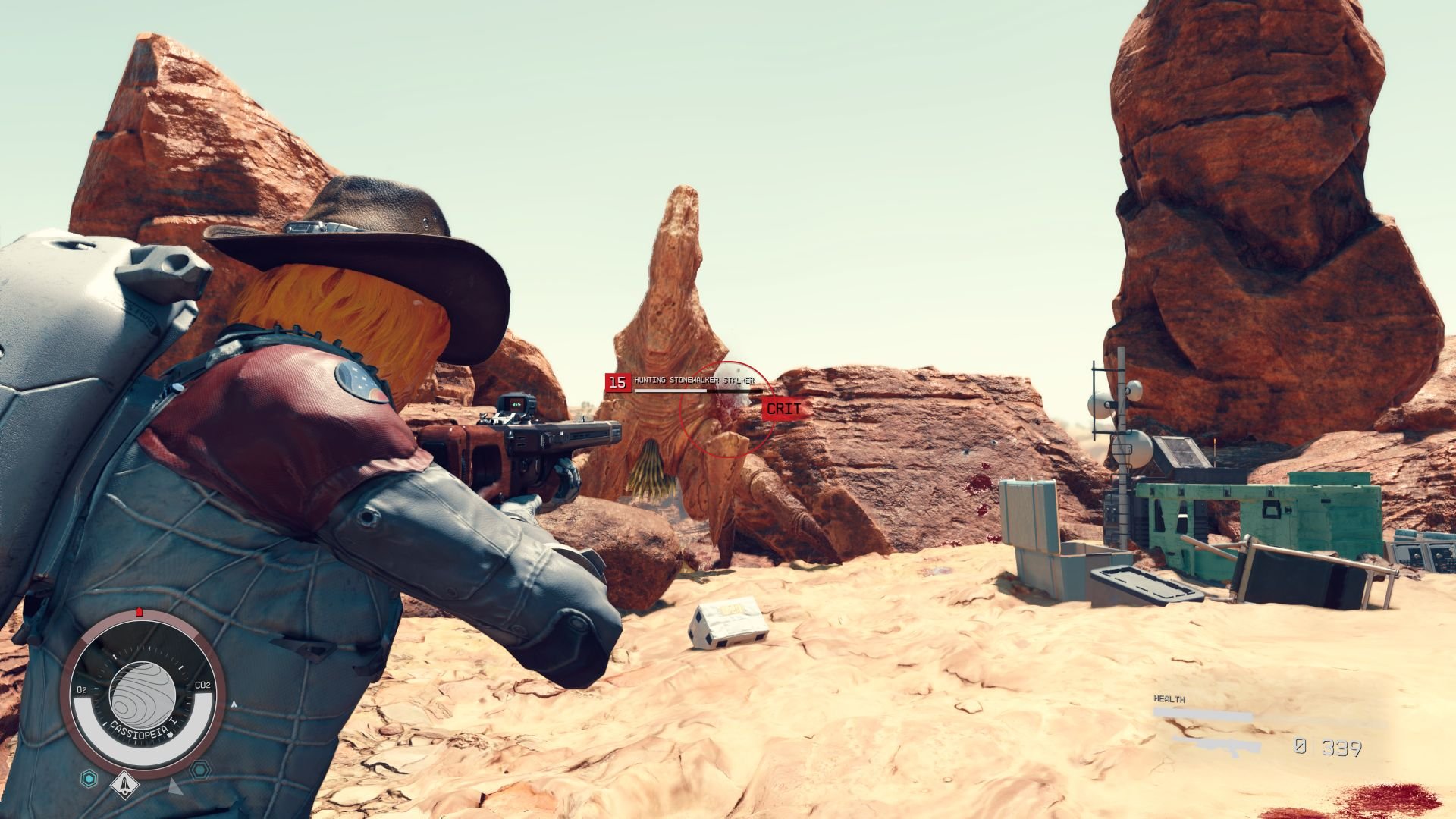To Boldly go where I guess everyone has already gone before.
Starfield has been a topic of discussion for the past half-decade. From it being the first new IP from Bethesda Game Studios in over 25 years, to its inclusion as part of Xbox Game Pass, let alone being an Xbox console exclusive. While Starfield is a remarkable achievement in creating a game built around the vastness of space, and humanity's reach amongst the stars, typical Bethesda game design and numerous glitches result in an experience that often has it struggling to break orbit.
First, I'll get this out of the way, I very much enjoyed my time with Starfield despite its noticeable frustrations. From its solid shooting mechanics, engaging with several of its characters and the worlds you'll explore, and the numerous ships you'll pilot or build, there is a lot to dig into and enjoy. However, a host of bizarre design choices certainly hold it back and it never really amounts to being much more than just Fallout or Skyrim in space.
While that isn't a damning label, as many will likely still find what they want to enjoy here, or even that they wanted that exact formula brought to life in the deepest reaches of space, I personally expected Starfield to feel like its own experience, as a new IP should, rather than heavily relying on the publisher's past. For anything new it attempts to do, this is still very much in that Bethesda formula. From the random looting of nonsensical junk, dialogue choices, sneaking around, and unlocking chests, doors, and containers, Starfield is a Bethesda game through and through. Again, this is by no means a bad thing, I had simply hoped for a little more.
Before you take to the stars, Starfield's opening moments introduce you as a run-of-the-mill miner at the Argos Mining Post on Vectera. A simple excursion into the mines sees you make contact with a mysterious artifact. As you attempt to retrieve it, the simple act of touching it unlocks a rhythmic hum of the galaxy flooding your senses. The artifact is attempting to communicate to you, and it's not until you join the ranks of the Constellation, a group of explorers set to track down these artifacts, that you'll understand their purpose and role within the galaxy. Both that of Constellation and of the artifacts themselves.
While tracking down some of these artifacts can be nothing more than typical busywork, moving from one objective marker to the next, I have to admit, that there were a few of them that really kept my attention. From securing a fragment deep within the vaults of a mercenary-equipped collector to one particular encounter that begins with a response to a distress signal. However, it is how you discover most of them that left a lot to be desired. Most of these artifact fragments had already been discovered and mapped out by Constellation, meaning you never really happen upon them yourself or discover them through casual means, you just go where the objective marker takes you. It’s pretty boring and uninspired in that respect.
Even when you go to seek out certain locations later on that correspond to the fragments you have collected, these too are already discovered for you. Sure, you have to open up your scanner to sense the waves of interference, or simply look across the barren world for a visual of your target, but the planets they are on are all found for you. It’s such a boring way to plan this sort of “discovery” around, especially as you are meant to be explorers. This causes the galaxy, which is filled with over a thousand planets, to feel insignificantly small when everything presented to you is done in a straight line. Had the fragments had some sort of puzzle or cipher to track down their coordinates, like one mission in particular attempts to do, then finding these important locations could have been something fun and made it feel like you earned them. Instead, they are simply given to you.
While the purpose of these fragments leads to some very interesting moments and gameplay mechanics, as well as the story about their discovery and what it means in the grand scheme of things, the main narrative doesn’t hold a candle to the content you discover when you freely explore or the various stories that come from the numerous factions you can dive into. From infiltrating a band of pirates, tracking down a race of world-destroying monsters, to becoming a space ranger to invoke a sense of justice across the systems, so many of these stories are infinitely better than the main narrative Bethesda attempts to tell.
In fact, the mission built around infiltrating the band of pirates is easily the best part of Starfield and a compelling reason for my review score not being lower. This is because it essentially taps into everything Starfield does right. From a story weaved around truly interesting characters, and strong moral choices, to a vast amount of space battles and gun fights that keep the pacing balanced and engaging. Had the entire game been built around taking down the Crimson Fleet from dominating the galaxy, or even joining their ranks to assist in seizing that control, then I do feel the game would be far better for it. It's just that good. When I wrapped that quest up and went back to my playthrough, it just didn’t hit the same way. I missed what that quest wanted from me, I simply didn’t find it elsewhere.
Across the various galactic systems are a few settlements of humanity, stretched out across the stars from small towns to massive cities. There is the cyberpunk Neon streets on Volii Alpha to the city of New Atlantis on Jemison, and Akila City, with the latter giving off strong Fallout vibes. Each are great locations to engage with, even if Starfield features no easy way to truly navigate them, largely due to the fact that there are no city maps. Regardless, the amount of space and detail given to them is substantial, especially New Atlantis, which feels like the fully realized version of the Citadel from Mass Effect that we have always wanted. Each location here feels wholly individualized and unique. Even exploring Cydonia on Mars has this vibe of the underground and lived in locations found in something like the Expanse.
Now, a lot of talk has been made about Starfield having over a thousand planets to explore, each with its own weather, species, and various characteristics. While that is true, the story and all the various side quests only point you toward a tiny fraction of a fraction of that many. The quest-based worlds usually have more going on than what you normally find on planets that are there solely for exploration or resources. On these random planets, you'll find outposts and other signs of life. It's pretty uncommon that you find a world that hasn’t had some sort of discovery already placed upon it. Given that you join up with Constellation, a group of explorers primed for discovery, the fact that everything has already had some aspect of human touch is a tad disappointing.
Across all of these worlds, you’ll interact with a variety of different systems. From scanning all the resources of a planet to taking back outposts from various pirates and factions, to looting entire outposts yourself and making a killing back at the shops. You can also build outposts on these planets or take advantage of different housing options within each city, even if it was a system that I rarely saw the real point of. Still, it’s a system I can see people getting hundreds of hours out of, so I’m not against its inclusion here. This is on top of recruiting crew members to your ship or even setting them down on your outpost and giving them tasks to do, all working towards making you rich in resources or earning some good ol’ space bucks.
Your ship is another avenue of customization that is very impressive through the ship builder. Through various parts and pieces, you'll craft a ship that suits your needs. That said, the fact you cannot invert the controls in this particular feature was a huge annoyance for me, constantly having me rotate the screen in the completely wrong directions. While I adore what this ship builder offers, it is sometimes not easy to understand what is wrong with your ship when you get errors. It will say there is an error, but apart from the name of the error, it doesn't indicate where the error is located. Had there been a feature to highlight the piece or pieces that are affected, by possibly having them flash or highlighted with a particular color, with maybe a small blurb of detail to indicate what the error means would have gone a long way to making that system more intuitive.
Regardless, the ship builder is a tool you'll likely lose several dozen hours in due to the vast creativity you can have here. Nearly every ship across sci-fi has been recreated here in some form. From new habitats to medbays, and armories, the variety of stations and weaponry you can customize your ship with is rather impressive. I do wish there was a way to explore your ship in the builder so that you can easily view the habitat differences or designs or how spacious the cockpit truly is before you commit to the purchase of that part. The number of times I made my ship, closed the ship builder and went inside it, and then hated that particular hab to then go back into the ship builder and swap it out with another one was a lot and felt like a drain on my time.
Before you have a chance to pilot your ship, your own spacefarer is built using the best character creator Bethesda has ever made. It's not the most detail-rich creation system out there, but it is nonetheless impressive, giving you a decent amount of tools to work with. You’ll pick from an assortment of body shapes, facial features, and hairstyles, all allowing you to create the character you want. Then, you’ll choose a background to flesh out your backstory. Myself, I chose Bounty Hunter, which immediately granted me the ability to target particular parts of enemy spacecraft. Then, you’ll choose from a series of traits, each that have pros and cons to consider. Alien DNA, for example, boosts your starting health and oxygen, but healing and food items are not that effective. There is even a trait called Hero Worship that grants you an adoring fan that occasionally pops up to talk your ear off.
As you progress throughout the galaxy, completing missions, gunning down various space pirates, and engaging in hundreds of conversations, you'll earn experience and level up. This provides a skill point to place into a ton of varied perks and bonuses. From increasing your stealth, weapon damage, or carrying capacity, you can also unlock skills that allow you to get better deals at the shop or increase your persuasion skills to get the upper hand in dialogue. Each skill then has a task assigned to it to unlock the next skill to purchase such as shooting down enemy vessels or killing a certain amount of enemies with a particular weapon type. This system felt great to use since it gave you something to work for while you are out on your adventures; things you likely were going to do anyway. And, since there is no level cap, you can continue to grind away to unlock every single skill, which continues over into newgame+, allowing you to continue building out your character's overall stats.
One of the core systems across Bethesda games is the way you interact with characters through dialogue. Starfield is no different as the outcomes of several missions can be a result of your ability to persuade or eventually bribe your way through conversation. However, while the stat tracking for this system is fine enough, several of the responses are so poorly written that it feels like my character is doing nothing more than gesturing a "C’mon on…" and then they fold, giving in to the flimsy excuse I manage to use to convince them with. I had a moment where they were absolutely against the idea but a simple "C’mon on, it'll be a fun time." response I gave them suddenly converted them to being into the idea. I'm all for systems like this, especially as Baldurs Gate 3 is packed full of these moments, but the writing here simply needs to offer up convincing options for them to feel like a natural avenue for persuasion, something BG3 does in spades.
Apart from the bevy of dialogue systems is how Starfield handles its combat as well as taking to the depths of space. Combat itself is great, especially as Fallout has been the only avenue for this team to work with guns. While Id Software helped with portions of the game, it was reported that they did not work on combat, which is surprising due to how polished the shooting can feel. From physical to energy to electromagnetic weapons, to a host of melee options and throwables, as well as the ability to apply custom mods to your weapons, you have a wealth of options to take on and alongside you.
Even weapons within the same type can feel entirely different from one another, and finding rare versions with the included mods can be a game changer. I found a Beowulf rifle that I adored, a weapon that became my go-to throughout the campaign. While I was having a great time with it, I eventually found a legendary version of that rifle, granting it the ability to randomly apply incendiary damage as well as a shotgun-like spread. It melted anything I could find. While Starfield doesn't feature the VATS system Fallout fans have enjoyed for years, the shooting here feels great, but its use in third-person is not as well executed as I would preferred, largely because there is no option to swap shoulders, meaning trying to aim around a right corner leaves you wide open. I had to resist my desire to play in third-person during combat simply because of this. Which is a shame considering that is my ideal way to play these games.
When it comes to space travel and dogfighting, I am somewhat torn, especially as I came to Starfield just a day after playing through a chunk of Everspace 2. Considering Everspace 2 has some of the best space combat I've ever played, my early hours into Starfield weren't cutting it. It certainly became far better once I invested in better weapons and a stronger ship, but I can't say I love the space combat as much as I had hoped. I enjoy it a great deal now, but it's far from my favorite, placing it leagues behind the likes of Everspace 2, Chorus, and Starlink: Battle for Atlas simply having vastly better space combat. Still, it's more than serviceable and gets the job done.
Where it begins to have depth is that you can convert energy across your weapons, shields, engine, and Grav drive. This allows you to remove power from a single weapon system to put into shields to allow you to come out of a tough battle alive. You can also use this to your advantage against your foes as well as taking out their engines and weapons allows you to board their vessel and claim it for yourself. Thankfully, your main ship will autopilot its way back to your garage, so feel free to steal as many ships as you want. If there was anything to be incredibly impressed about with regards to taking to your ship into space, it is the boarding an enemy vessel, killing the crew, and then taking their ship. And as you tinker with the ship builder and find better parts, you can eventually equip parts that grant you more energy in your reserves, making those systems work much harder for you.
Traversing the galaxy is likely going to leave a lot of players disappointed as space is nothing more than a series of menus, zones, and fast travel points. Each time you load into an orbit around a planet, different events will happen. From hailing other ships for various dialogue moments or taking on squadrons of space pirates or bounty hunters, these distractions are fairly enjoyable and happen pretty frequently. However, traveling from system to system is done through a series of menus that are not intuitive to manage whatsoever. Each system within the galaxy is traveled through a path that requires a certain amount of fuel. This has you stopping along the way to locations where you’ll have to refuel. Now, you don’t manually refuel your ship, it simply happens as you make a stop at whatever planet’s orbit that is on the way. I figure this is done to solely keep those mini-events happening instead of traveling long distances and seeing less of them. Still, this whole menu system of flying along the path feels pretty bland and not as exciting as actually flying your ship. I understand why they did it, I just didn’t find it enthralling.
Thankfully, you can fast travel to your location pretty easily through the mission system. You can pick your mission, hit travel to objective, and you’ll land your ship right then and there. There are a lot of load times, but I never found them too long and the various screenshots you take through the photo mode will occasionally pop up within them, so that’s pretty cool. This fast travel system worked so well that I rarely found myself going into space, other than the moments when I have to click on the planet to find a place to land, which works well enough. You’ll also have to ensure you don’t have contraband on your ship or the authorities will want to have a word with you, something that I failed to realize as I flew to Akila with a ship I just nabbed from space pirates, loaded with the stuff.
From New Atlantis to Neon and into the deepest reaches of space, Starfield has a visual aesthetic and level of detail to its environments that consistently impresses. Regardless of the 30fps limit on Xbox Series X, Starfield is a breathtakingly gorgeous experience with a stunning amount of detail everywhere you look. From intricate ship controls and panels, to its Nasa-Punk aesthetic that gives much of its design a very grounded and mechanically flavored approach. I also have to say that while not every face across the thousands of people that occupy this game looks great, there are many that really emote extremely well, especially those involved across the faction quests or those who make up Constellation.
Characters like Sarah Morgan and Andreja were my rotating crew, with occasionally bringing out Vasco when I had to make choices that didn't agree with the human members of the team. And despite Vasco being a very engaging robot companion, I would have killed to have Kaiser instead; a robot you'll find during the UC Vanguard Questline. He was a real standout, not to mention a source of a fantastic Transformers: The Animated Movie easter egg. Regardless of whoever you bring with you, the overall cast is fine with few outside of Sarah and Andreja being truly memorable.
I do have to point out that I was not a fan of Starfield's UI, both in gameplay and especially in its menus. From having to hold B to leave a layered series of menus to poor item management, to a lack of just anything that felt intuitive to use. I feel like these are a series of menu systems that will be fixed by modders and not that of Bethesda themselves, regardless of any patches in the future. It also has a lot of unnecessary steps to handle your inventory on your ship to also giving companions items to carry so you don't become over-encumbered every 30 seconds, because you will.
Throughout my playthrough, I experienced a large number of various bugs and technical issues. From numerous amounts of enemies clipping through railings upon death or npcs constantly having invisible weapons to two seperate instances of my companion having their head cloaked, which was only able to be fixed upon a complete restart of the game. Across my 70+ hour playthrough, I would say that I experienced well over a dozen instances of some typical Bethesda jank. Now that said, I do believe that Starfield is their most polished game, as most of the time it was somewhat smooth sailing.
The discussion around Starfield both leading up to its release and the overall impressions has been pretty interesting. While the review bombing squad is running full force at the time of this review, with people purchasing the game on Steam to simply give it a bad review before refunding it, that is simply not indicative of the experience presented here. I don’t think it’s a perfect game or even one that will be part of my Game of the Year discussion, but I certainly had a good time with it. I personally think that Starfield’s highs are considerably more constant than its lows, and while its technical issues are certainly an annoyance, I still found most of what is here to feel remarkably well-crafted, apart from the aforementioned issues I did have with it. I think Starfield is in a good place for the modding community to latch onto this game and really elevate the base of what is here as they have done so with both Skyrim and Fallout before it. While Starfield doesn’t feel like a wholly unique and new IP for the studio, it certainly shows the refinement that the team has made on this formula, taking it to new heights but rarely to greatness.
Developer - Bethesda Game Studios. Publisher - Bethesda Softworks / Microsoft. Released - September 6th, 2023. Available On - Xbox Series X/S, Windows. Rated - (M) Blood, Strong Language, Suggestive Themes, Use of Drugs, Violence. Platform Reviewed - Xbox Series X. Review Access - Starfield was downloaded and played via Xbox Game Pass.






















Jeff is the original founder of Analog Stick Gaming. His favorite games include The Witcher III, the Mass Effect Trilogy, Hi-Fi Rush, Stellar Blade, Hellbade: Senua’s Sacrifice, and the Legend of Heroes series, especially Trails of Cold Steel III & IV.